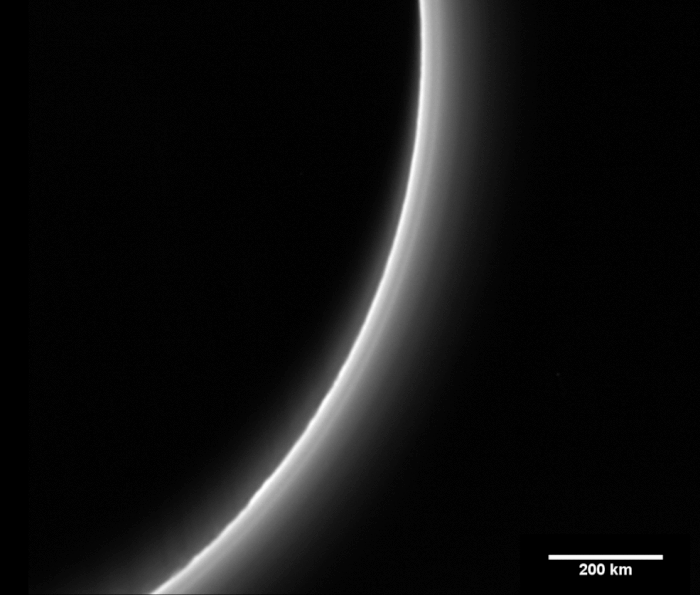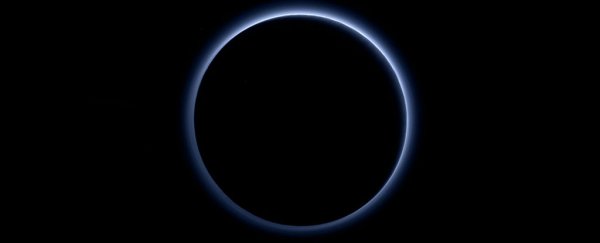If you happen to have a chance to zip by Pluto – just in case you're headed out that way – be sure to take a closer look at the atmospheric outline of the dwarf planet as you pass by.
If you were to time it so that the Sun was right behind Pluto during your flyby, you'd see an amazing phenomenon – the haze in Pluto's nitrogen atmosphere varies in brightness, creating a flaring effect that almost makes it look like the surface of the dwarf planet is rippling.
We know this because NASA's New Horizons probe was privileged to witness this very spectacle when it made its flyby of the dwarf planet last year, and it captured the rippling effect in the animation you can see below.
So what's going on here? According to NASA, the layers of haze that make up Pluto's primarily nitrogen-based atmosphere can vary in brightness depending on illumination and your viewpoint. But these layers maintain their overall structure in the atmosphere, so what's behind the crazy light show?
New Horizons scientists think the rippling effect could be due to gravity waves – not to be confused with gravitational waves. Also known as buoyancy waves, gravity waves are an atmospheric phenomenon that occurs on Earth and Mars (and now, apparently, Pluto).
 NASA/JHUAPL/SwR
NASA/JHUAPL/SwR
They result from airflow over mountains, NASA explains: "As the name implies, atmospheric gravity waves form when buoyancy pushes air up, and gravity pulls it back down."
The backlit images that make up the animation you see here were taken by New Horizons' Long Range Reconnaissance Imager (LORRI) as the spacecraft departed Pluto on 14 July 2015. NASA says the gravity waves – if that indeed is what's causing the flaring to take place – make the brightness in the haze vary by about 30 percent.
But despite the fluctuating appearance, the haze itself occupies the same space and keeps its height – extending to an altitude of around 200 kilometres (120 miles) above Pluto's surface.
While there's still a lot we don't know about Pluto's atmosphere, we're finding out more all the time, thanks to New Horizons still transmitting data back to Earth, even though the flyby happened several months ago.
And the discoveries will keep on coming, too, as the observations are expected to take a full 16 months to download in total.
"Pluto is simply amazing," said LORRI principal investigator Andy Cheng, from the Johns Hopkins University Applied Physics Laboratory. "When I first saw these images and the haze structures that they reveal, I knew we had a new clue to the nature of Pluto's hazes. The fact that we don't see the haze layers moving up or down will be important to future modelling efforts."
